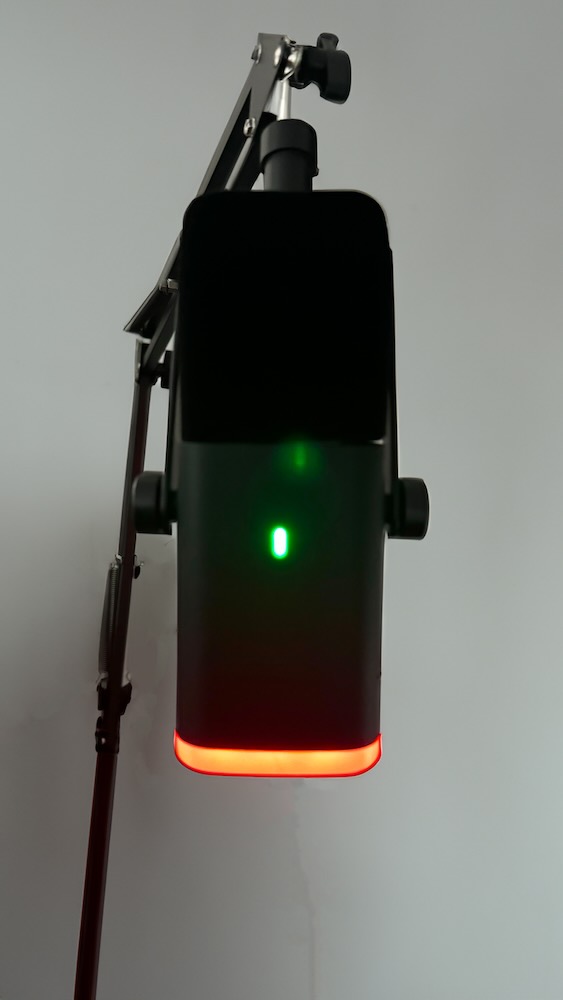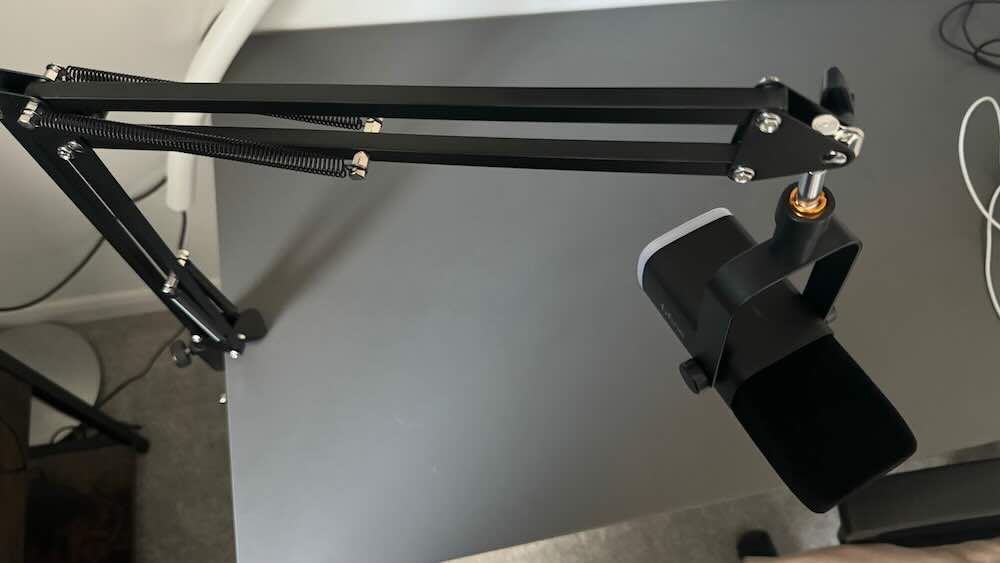Much like my review of the Fifine Ampligame A8 microphone a few months back, FIFINE, the company that makes the most popular and highly rated microphones on Amazon, got in touch again to ask if I'd review their Ampligame AM8T microphone, including a boom arm. After the review I gave the previous microphone, which stated that I thought the microphone was a "solid contender" for the best microphone for bang for the buck, especially compared with a Blue Yeti that was priced at four times the price of it, I was definitely up for testing this microphone. FIFINE got in touch with me a few days back to review another product for them, the AM8T.
One of my main criticisms of the A8 was the lack of something that this microphone has (read on to find out what it is!).
In this review, I aim to be honest and give you and FIFINE my thoughts on this device. I have been using this microphone as my main recording device for the last few weeks. Before I start, I'd like to say thanks to FIFINE for providing me with the opportunity to review this microphone.
Introduction
Before receiving the microphone, I had considered buying it due to the addition of the XLR port. My first thought after getting this microphone was that I was hugely impressed by the build quality of the microphone. The velvety microphone windscreen makes it feel very premium compared to a foam one (and the material used is more effective).
You can get the microphone for about £75.00 on Amazon, so it's not hugely expensive.
The RGB is a nice touch on this microphone, but much like the A8, it can only be cycled through certain colours. This may change in the future, of course. It would be nice if it were possible to change the colours of the microphone from the software. I say this because fairly imminently, I am considering relaunching my YouTube channel after eight years of being out of it, and I'm going to be using one of the microphones I have reviewed recently and would like to set it to my channel's colour of orange (precisely #ff6600).
This microphone has also won the Red Dot Award for 2023, so it's clearly pretty well received by others.
But what do I think of it now? Simply put, this microphone is nothing short of exceptional. The quality is astounding and yet all of this comes for what appears to be one of the cheapest good quality microphones out there.
Design
The design of the FIFINE AM8T is very sleek, especially compared to their cheaper A8. The design is soft yet professional and could fit both in a bedroom setup or a proper recording studio. The windscreen on the microphone is built into the design, again adding to the sleekness of the microphone. As mentioned, the windscreen is made with a velvety material - not just cheap foam. I found that the windshield on this works very well - listen to my example below.
The microphone base features your standard RGB LEDs, but as mentioned before, the problem I have with this is that the microphone can cycle through colours, but there is no software to configure the RGB yourself. You can, however, press the button on the base of the AM8T to choose one colour for the microphone. A nice feature of the microphone is that when it is muted, you can see this visually as the LED strip changes to a deep red colour. The RGB can only be used when using USB-C, not when using the XLR port of the microphone.
It's a light microphone compared with others I have owned or tested, such as the Yeti. This is particularly important when put on a boom arm.
The boom arm is of good quality and's not going to break during continuous use, and although the design is fairly simple, it's also sleek and doesn't look too out of place anywhere you put it. Something I would have liked was the inclusion of a desk stand since it was supplied with a boom arm in its place.
Specifications
The comparison between the different microphones I own has a clear-cut winner. See for your self by comparing all three.
The Fifine AM8T
The Fifine A8
Blue Yeti
As mentioned before, the AM8T features a USB Type C connector. USB-C is a good connector since you can easily connect to a USB Type-A connector using the included Type C to Type A cable. It also means you can easily connect to an iPhone 15 or other USB-C device using a USB-C to USB-C cable. I tested this with my iPhone 15 Pro and can say it's a very useful feature!
I have three examples of sound quality from three different microphones, the FIFINE A8, the Blue Yeti and the FIFINE AM8T.
The AM8T is, I would say, by a long shot a better sounding microphone than both competitors. I think a lot of that is down to the windshield, but the clarity in my voice is just incredible. What do you think?
The AM8T features an XLR connector, which is a really lovely addition. FIFINE does not include an XLR cable with the microphone, which is justified since most people using the XLR connector will have their hardware for this and will likely have their own XLR cables.
XLR Port
XLR ports use analogue signals that, compared with something like USB-C, do all the analogue to digital conversion (ADC) within a separate audio mixer instead of in the microphone - producing better quality sound.
Additionally to the USB-C and XLR connectors, there is a 3.5mm audio output. This means you can plug in headphones to hear what the mic is picking up. I use this feature a lot on my Yeti when recording games, as it means that I can ensure the microphone picks up what I am saying correctly.
Quality and appearance
As mentioned before, this microphone has a somewhat premium feel. I particularly like the windshield on this device since its velvety feel is a nice change compared to the solid or cheap feel of my other microphones. Whilst it is made of plastic, I'll say what I said in my review of the A8 - this is a microphone and not something that needs to be made incredibly durable, as it will likely stay in the same place for most of its life. Also, being made of plastic like this makes it very light compared with something such as the Blue Yeti.
Much like the FIFINE A8, the primary competitor microphone for this review is the Blue Yeti, which is still considerably more expensive.
As I mentioned, the AM8T is considerably lighter than the Blue Yeti, which is a big plus. It also features an XLR connector, which the standard £160.00 Yeti doesn't feature. The FIFINE is also a lot more convenient than the Yeti due to its lightweight design and USB-C connector.
Audio quality on the FIFINE AM8T is also on par, if not better, than the Blue Yeti - I guess that is up to you to assess.
Conclusion
What do I think of this microphone after using it for the last eight weeks?
For starters, I think this microphone is a smashing piece of kit for the price. £75 for a microphone which provides exceptional quality audio is something you cannot really argue with. The inclusion of the XLR port on this microphone is another huge plus. My argument against buying this microphone is this: if you do not plan on using the advanced features of this microphone, such as the XLR port, you are better off going for FIFINE's A8 microphone. The same can be said for the boom arm; if you don't need it, the A8 is a cheaper alternative that offers much of the same quality.
Overall, I'm hugely impressed by the AM8T microphone, and it's become my new microphone of choice. I can hardly complain about it, only that it might be more than I need now. I'd love to try using the XLR port with an ADC/mixer at some point in the future, and if I manage to get one, I will add information/samples to this review.
So, would I recommend this microphone? Absolutely.
After reading this review, FIFINE sent me the stand for it. It's a clever stand design that uses the mount slot to connect directly to a simple base.





